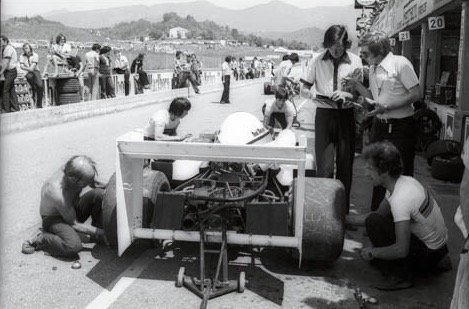Formula 1: How the 1970s Compare to Today’s Racing - Part 2
Credit: Jutta Fausel
Safety: Risk vs. Responsibility
Perhaps the most striking difference between F1 in the 1970s and now is safety. The ‘70s were a terrifyingly dangerous time for drivers. Tracks had minimal run-off areas, fire was a constant threat, and fatalities were tragically common. The crashes of François Cevert, Ronnie Peterson, and many others were stark reminders of how thin the margin between life and death could be.
Contrast this with today, where the FIA has revolutionized safety standards. The introduction of the Halo device, advanced crash structures, and rigorous medical protocols has saved multiple lives. Romain Grosjean’s miraculous escape from his fiery Bahrain crash in 2020 is a testament to how far F1 has come in protecting its drivers. In the 1970s contact with other cars was largely avoided, it was too dangerous.
The Spectacle: Drama vs. Technology-Driven Racing
The 1970s were unpredictable, with reliability failures, driver rivalries, and on-track drama defining each season. Today, the spectacle remains, but with a different flavour. The dominance of certain teams (Mercedes in the 2010s, Red Bull now) can make racing feel more predictable, but strategy, tyre management, and DRS-assisted overtakes keep things exciting. Also seeing a Grand Prix was special in the 1970s due to there being far less on TV or in the media, and at the circuit fans could get closer to the action.
Formula 1 is more globally connected than ever, with social media, Netflix’s Drive to Survive, and fan engagement making it a 24/7 entertainment product. But has it lost some of its raw appeal in the process? Some fans long for the days when races were decided on instinct rather than intricate fuel and tyre strategies.
Conclusion: Evolution or Over-Sanitisation?
Formula 1 today is undoubtedly safer, faster, and more technologically advanced than ever. But there will always be a romantic nostalgia for the 1970s—a time when heroes emerged from the smoke and gasoline, and the sport felt like the ultimate test of bravery. While the purity of old-school F1 may never return, the thrill of competition remains at the sport’s core, ensuring that each new season brings fresh drama, rivalries, and unforgettable moments.
As the 2025 season begins, one thing is certain: whether in the ‘70s or today, Formula 1 will always be the pinnacle of motorsport. And if you want to get closer to motor racing to get a sense of it without too much expense, then spend a day at a club race meeting such as Sports 2000, where you can meet the drivers, see the cars and feel the energy.
